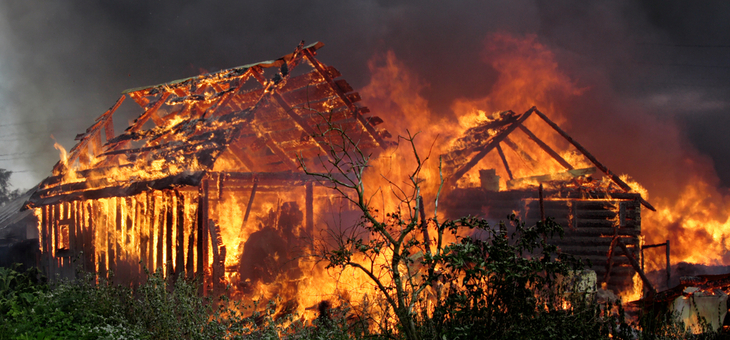Insurance claims from Australia’s bushfires are estimated to exceed more than $700 million, with the Insurance Council of Australia reporting that the estimated damage bill from bushfires had doubled in just two days earlier in the week. And the fires across the country are expected to burn for months.
But a national crisis of underinsurance could cripple communities for years, if not permanently, according to research from the University of Tasmania.
The research paper says that while much was learnt from Victoria’s Black Saturday fires in 2009 and the Ash Wednesday fires in Victoria and South Australia in 1983, a lesson still not really learnt is that home insurance is rarely sufficient to enable recovery.
The evidence is that many people losing their homes will find themselves unable to rebuild, due to lack of insurance, the paper says.
“We know this from interviews with those affected by the October 2013 Blue Mountains bushfires (in which almost 200 homes were destroyed),” say authors Chloe Lucas, Christine Eriksen and David Bowman. “Despite past disasters, more than 65 per cent of households affected were underinsured.”
Research published by the Victorian government in 2017 estimated that just 46 per cent of Victorian households had enough insurance to recover from a disaster, with 28 per cent being underinsured and 26 per cent having no insurance.
“The consequences aren’t just personal,” the academics argue. “They potentially harm local communities permanently, as those unable to rebuild move away. Communities lose the vital knowledge and social networks that make them resilient to disaster.”
Writing for The Conversation, the authors say that all too often the disaster of having your home and possessions razed by fire is followed by the disaster of realising by how much you are underinsured.
“As researchers into the impact of fires, we are interested why people find themselves underinsured,” they say. “Our research, which includes interviewing those who have lost their homes, shows it is complicated, and not necessarily due to negligence.
“For example, a woman who lost her home in Kinglake, north-east of Melbourne, in the 2009 fires, told us how her insurance calculations turned out to bear no resemblance to the actual cost of rebuilding.
“‘You think okay, this is what I paid for the property,’ she said. ‘I think we had about $550,000 on the house, and the contents was maybe $120,000.’ It was on these estimates that she and her partner took out insurance. She told us, ‘You think sure, yeah, I can rebuild my life with that much money. But nowhere near. Not even close. We wound up with a $700,000 mortgage at the end of rebuilding.’”
The authors says a common issue is that people base their insurance figures on their home’s market value, but that rebuilding is often more expensive.
“For one thing there’s the need to comply with new building codes, which have been improved to ensure buildings take into account their potential exposure to bushfire. This is likely to increase costs by 20 per cent or more, but is rarely made clear to insurance customers.
“Construction costs also often spike following disasters, due to extra demand for building services and materials.
“A further contributing factor is that banks can claim insurance payments to pay off mortgages, meaning the only way to rebuild is by taking out another mortgage.”
Underinsurance often means that those who lose their homes will move away, hampering the community’s recovery.
“In Whittlesea, for example, residents reported a change in community cohesion after the Black Saturday fires,” say the authors who were told by one interviewee that the newer people coming in weren’t invested to the same extent as the people who had left.
“If communities are to recover from bushfires, the nation cannot put its trust in individual insurance policies. What’s required is national policy reform to ensure effective disaster preparedness and recovery for all.”
Further University of Tasmania research reported on The Conversation shows that households aren’t making the connection between insurance and climate change, with Australians generally assuming that disasters will not affect the price of insurance.
The researchers say households in rural and regional areas are more likely to be insured than those in cities. They say this is because rural residents are more attuned to environmental conditions. In cities, residents can feel less connected and less exposed to environmental changes.
Are you guilty of underestimating replacement values in your home and content policies to save a few dollars?
If you enjoy our content, don’t keep it to yourself. Share our free eNews with your friends and encourage them to sign up.
Related articles:
Australia the lucky country?
Insurance claims: your rights
Health insurance in ‘death spiral’

